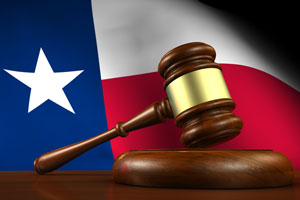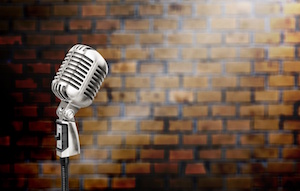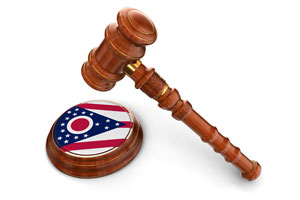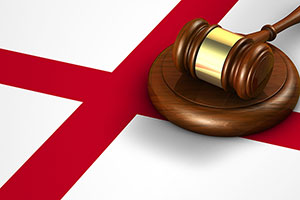A company relied on an expert witness to convince the Occupational Safety and Health Administration (OSHA) that its workplace could not have been made safer than it was at the time of an accident that killed an employee. The expert based his opinion on an understanding of the facts that was not supported by the evidence.
The decision rendered by the Department of Labor affirmed the rejection of the expert’s testimony. The decision serves as a reminder that experts should gain personal knowledge of the facts whenever they can.
Employee’s Death
CSA Equipment is a stevedoring company that loads and unloads cargo from ships. Certain CSA employees at the Port of Mobile in Alabama are tasked with checking large steel coils after they are unloaded from a vessel.
At the time of the accident, forklift operators delivered the coils to one of the warehouse entrances. A CSA employee verified the condition of each coil and determined where it should be stored in the warehouse. The employee then wrote location numbers on the coils so a forklift operator who worked inside the warehouse would know where to take them.
Forklift operators drive in reverse when moving the coils because the coils block their forward view. Their view to the rear is obstructed by the forklift’s counterweight. The forklift emits a beep when operating in reverse and employees who check cargo are instructed to listen for the beep and to get out of the way of oncoming forklifts.
An earlier procedure had employees standing near a yellow safety post as they checked the cargo. They then signaled forklift operators to move in after they completed the checking. The evidence persuaded OSHA that CSA abandoned that procedure, despite objections that its new procedure was less safe, to appease a customer who wanted cargo moved into the warehouse more quickly.
A forklift struck and killed a CSA employee who was checking coils inside the warehouse. After the accident, CSA had its employees check coils immediately after they were unloaded by crane from the vessel. After the crane unloaded four coils, the crane moved away and the employees checked the coils. Then the employees moved away and signaled for a forklift operator to move the coils to the warehouse.
OSHA Proceedings
An OSHA investigation determined that CSA violated a federal law that imposes a duty on employers to maintain a workplace that is “free from recognized hazards.” The hazard that OSHA identified involved CSA’s failure to designate paths for forklift travel that provided the forklift operator with a clear view, exposing employees to the risk of harm while they were checking materials into the warehouse. The citation identified three ways that CSA could avoid the hazard it created.
CSA contested the citation. According to CSA, no paths can be designated for forklift operation because the warehouse configuration changes constantly. The Administrative Law Judge (ALJ) who heard the case agreed with OSHA that one abatement procedure — setting up a “safe area” where employees could check materials into the warehouse without being exposed to unexpected forklift traffic — was feasible and had, in fact, been implemented after the accident.
OSHA appealed the ALJ’s finding, arguing that the proposed abatement procedure created hazards of its own. OSHA remanded the case and directed the ALJ to make specific findings regarding that defense.
CSA Expert Witness
There was no dispute that, at the time of the employee’s death, CSA recognized that forklifts created a hazard to its employees. The only question was whether a feasible and effective means existed to reduce the hazard.
CSA relied on the expert testimony of Eustis John Faulk. In her first decision, the ALJ found Faulk’s testimony to be unreliable because she regarded his opinion that “you couldn’t conduct cargo handling operations unless you had people on the ground and you had machines in the immediate area” to be in conflict with evidence that CSA had “in fact” separated the employees from the forklifts at the dock under its post-accident checking procedure.
OSHA instructed the ALJ to reconsider whether Faulk’s testimony nevertheless established that the proposed abatement procedure continued to place employees at risk. The judge reviewed the testimony again, describing it as “speculative, hyperbolical, and not grounded in the facts established by the undisputed testimony of the eyewitness who actually observed and experienced the pre-accident and post-accident operations at issue.”
The ALJ faulted the expert for failing to inspect the work site before rendering his opinion. The ALJ rejected the expert’s “idealized” explanation of how coils were unloaded and moved inside the warehouse because he assumed that coils were unloaded, checked, and moved away from the checking area one at a time, when witnesses testified that coils frequently “backed up,” creating a hazardous environment for employee who checked the coils.
The ALJ also faulted the expert for testifying that the new system posed its own hazards because workers who check the coils stand under the cranes as the coils are unloaded. Witnesses who actually worked at the site testified that workers wait until the coils are unloaded and the crane moves away before approaching them.
The ALJ concluded that the expert “manifested a stubborn refusal to acknowledge the actual pre-accident and post-accident operations as established by eyewitnesses.” It is not clear where the expert got his information, but he did not get it from personal observation. The ALJ credited the testimony of witnesses who actually viewed the worksites before and after the accident, rather than the testimony of an expert who apparently never saw the worksite that he described.
The ALJ again found that creating a safe work area for checking coils was a feasible and effective means of reducing the risk of workplace accidents. CSA again appealed, but OSHA affirmed that decision. This time, OSHA agreed that “Faulk ignored contradictory testimony from the three eyewitnesses, all of whom had personally observed the coil-checking procedures.” OSHA therefore rejected the claim that the ALJ had no basis for discrediting Faulk’s expert testimony.
Lesson Learned
Experts must apply their expertise to real-world facts. Sometimes they have no choice but to rely on facts supplied to them by the party that hires them. When facts are in dispute, experts can base an opinion on one view of facts while acknowledging that they are not deciding which view of the facts is true. Resolving disputes of fact is the task of judges and juries, not expert witnesses.
Experts should nevertheless be wary of relying on facts that have no support in the evidence. Faulk could not have known about working conditions at the accident site on the day of the accident, but his reliance on an “idealized” view of the facts was suspect in the absence of any dispute that coils “backed up” as they were brought to the warehouse.
More troubling is Faulk’s failure to assess the risks associated with the post-accident procedure that CSA implemented. Whenever possible, an expert should gain personal knowledge of the facts that the expert relies upon in testifying.
If Faulk had visited the worksite and seen employees standing under the crane, his expert opinion would have carried more weight. Basing an opinion on facts that do not actually exist damages an expert’s credibility, particularly when the expert could have investigated the worksite and based an opinion on his own observations, rather than making assumptions about risks that did not actually exist.













